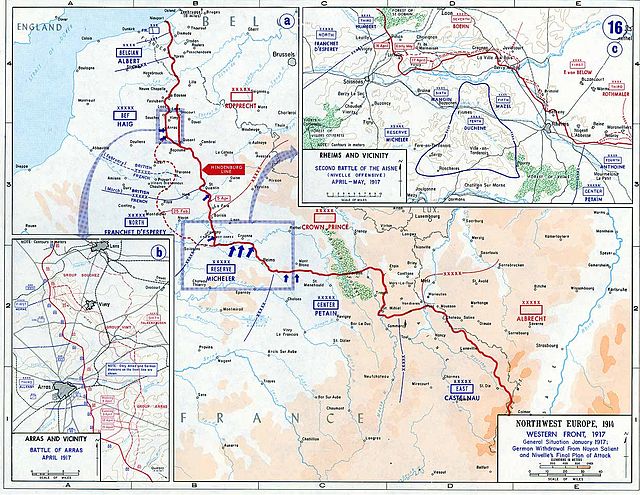Loading AI tools
Battle in France during World War I From Wikipedia, the free encyclopedia
The Drocourt-Quéant Line ([dʁɔ.kuʁ ke.ɑ̃]; German: Wotan Stellung) was a set of mutually supporting defensive lines constructed by Germany between the French towns of Drocourt and Quéant during World War I. This defensive system was part of the northernmost section of the Hindenburg Line, a vast German defensive system that ran through northeastern France.
This article includes a list of general references, but it lacks sufficient corresponding inline citations. (May 2021) |
| Battle of the Drocourt-Queant Line | |||||||||
|---|---|---|---|---|---|---|---|---|---|
 German wire at Quéant, 4 October 1918 | |||||||||
| |||||||||
| Belligerents | |||||||||
|
|
| ||||||||
| Commanders and leaders | |||||||||
|
|
| ||||||||
It was attacked and captured by Canadian and British troops in the closing months of the war as part of Canada's Hundred Days of successful offensive campaigning that helped end the war.

The Drocourt–Quéant Line (also referred to as the Drocourt–Quéant Switch) ran between the French cities of Drocourt and Quéant and was part of a defensive system that ran from a point within the Hindenburg Line, eleven miles west of Cambrai, northward to within seven miles west of Douai and terminated along the front east of Armentières.[1] The Drocourt–Quéant Line was a system in depth and incorporated a number of mutually supporting lines of defence. The system consisted of a front line system and a support line system, each consisting of two lines of trenches. The system incorporated numerous fortifications including concrete bunkers, machine gun posts and heavy belts of barbed wire.[2]
At 5:00 a.m. on 2 September 1918, Canadian and British forces attacked the Drocourt–Quéant Line supported by tanks and aircraft. In twilight, the Canadian 1st Division attacked the line south-eastwards, on the extreme right, south of the Arras–Cambrai road, The Canadian 4th Division attacked in the centre between Dury and the main road and the British 4th Division attacked south of the River Sensee.
Seven Canadians were awarded VCs individually that day: Bellenden Hutcheson, Arthur George Knight, William Henry Metcalf, Claude Nunney, Cyrus Wesley Peck, Walter Leigh Rayfield and John Francis Young.
The next day the Germans retreated to the Hindenburg Line with the Allies taking many prisoners. The Canadian and British troops then moved on to their next battle, the Battle of the Canal du Nord.
The Canadian Dury Memorial commemorates the Canadian Corps attack on the Drocourt–Quéant Line in 1918.
Seamless Wikipedia browsing. On steroids.
Every time you click a link to Wikipedia, Wiktionary or Wikiquote in your browser's search results, it will show the modern Wikiwand interface.
Wikiwand extension is a five stars, simple, with minimum permission required to keep your browsing private, safe and transparent.